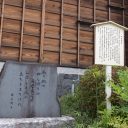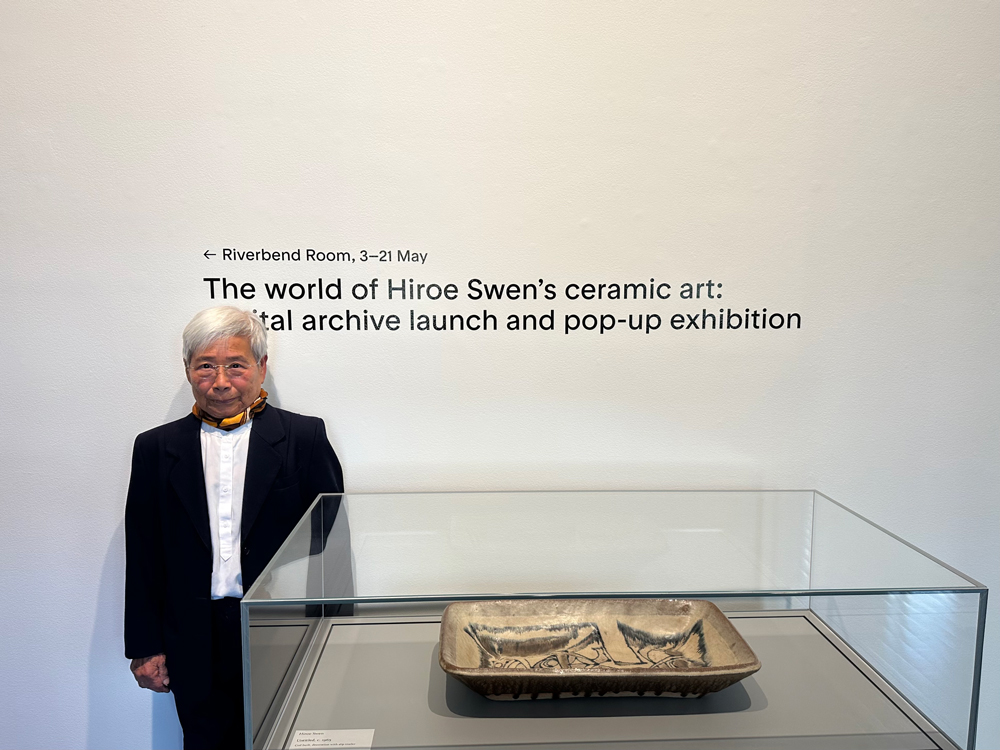
Hello! My name is Joy and I am an Intern at Nichigo Press. As the fourth event, I’d like to introduce you all to ceramic artist Hiroe Swen’s digital archive launch event which took place on May 13th.
The event was held as the launch of the digital archive ‘The World of Hiroe Swen’s ceramic art’ commemorating the 50th anniversary of Swen’s ceramic activities. A pop-up exhibition was also held at ANU Drill Hall Gallery from May 3rd to 21st.
Australia’s leading ceramic artist
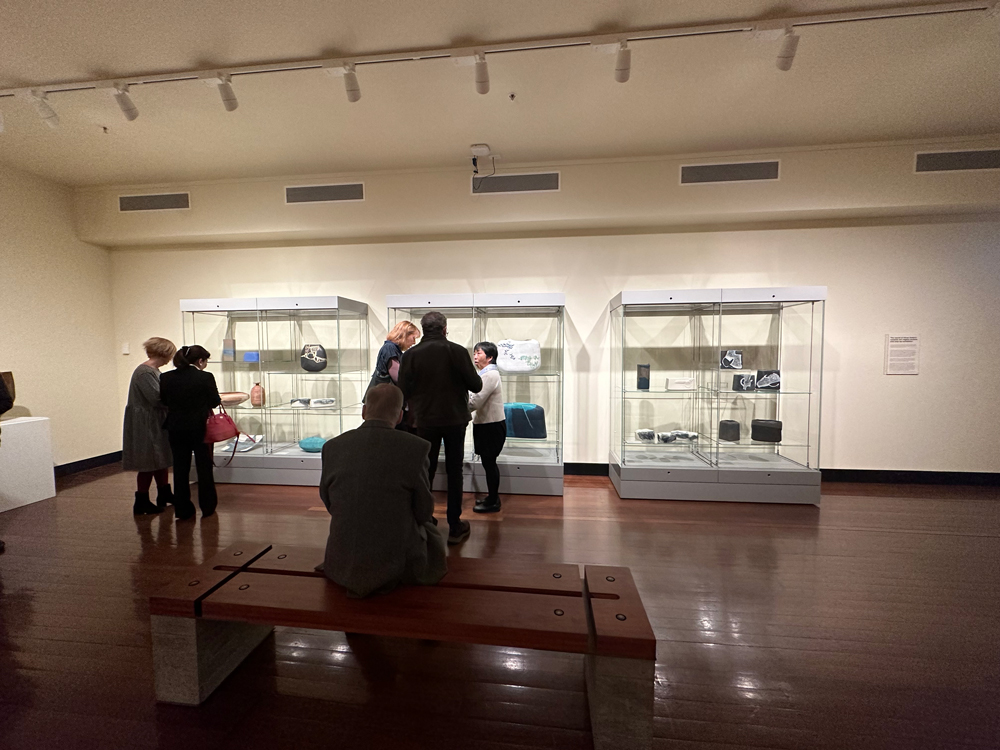
For more than 50 years, Swen has been a major inspiration to those involved in studio ceramics in Australia, bringing a particular perspective that was unusual in her early days and has since become an important role model for many.
Born in Kyoto in 1934, Swen studied oil painting in high school and then worked as a textile designer. In 1957, she began studying ceramics under the ceramic artist Heihachirō Hayashi at the Kyoto Craft Institute and his studio. At the time, it was unusual for a woman to undergo such training in Japan. Swen was one of the first women to make ceramics her profession after women’s suffrage was declared in 1945.
After establishing herself as a ceramic artist in Kyoto, she moved to Australia in 1968 with her husband Cornell Swen, a graphic designer and artist who had immigrated to Australia from the Netherlands. They set up their own studio and Pastoral Gallery on the Bimbimbi grounds in Queanbeyan, near Canberra where she lived, worked and exhibited until 2000.
She taught ceramics at Canberra Technical College from 1971 to 1973, then founded the ‘Bimbimbi Ceramic Study Group’ and was a lecturer at the Canberra School of Art (now known as ANU School of Art & Design) from 1981 to 2000.
Swen chose to live for art
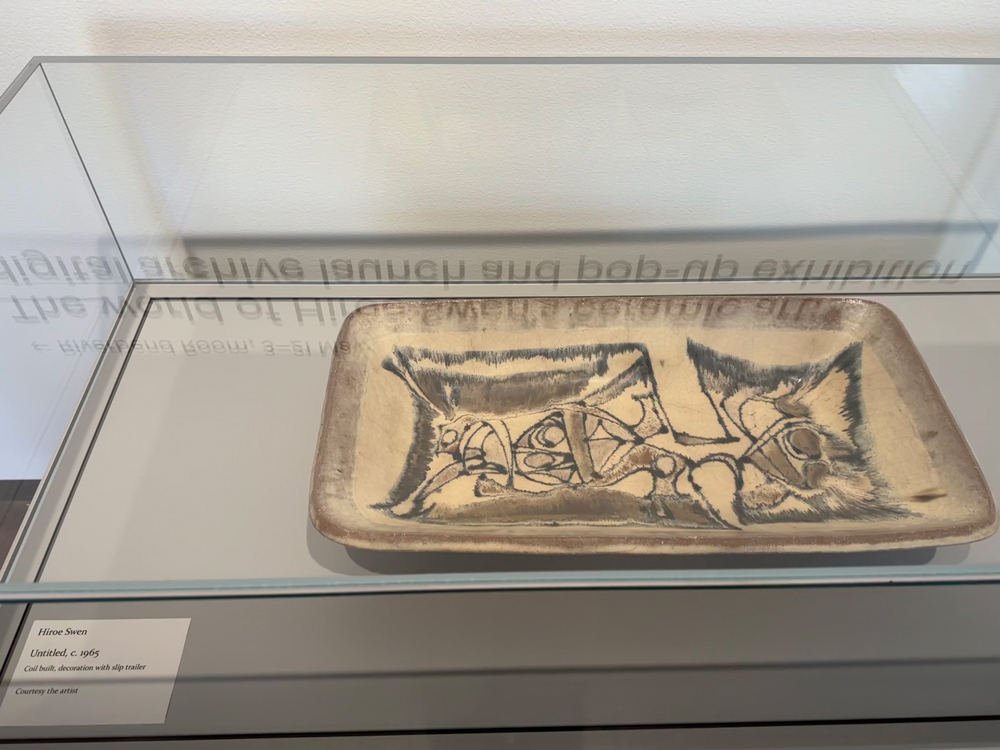
I had been interested in Swen, a Japanese ceramic artist working in Canberra, before attending the event. I was delighted to be able to view her work and hear from her in person at her exhibition.
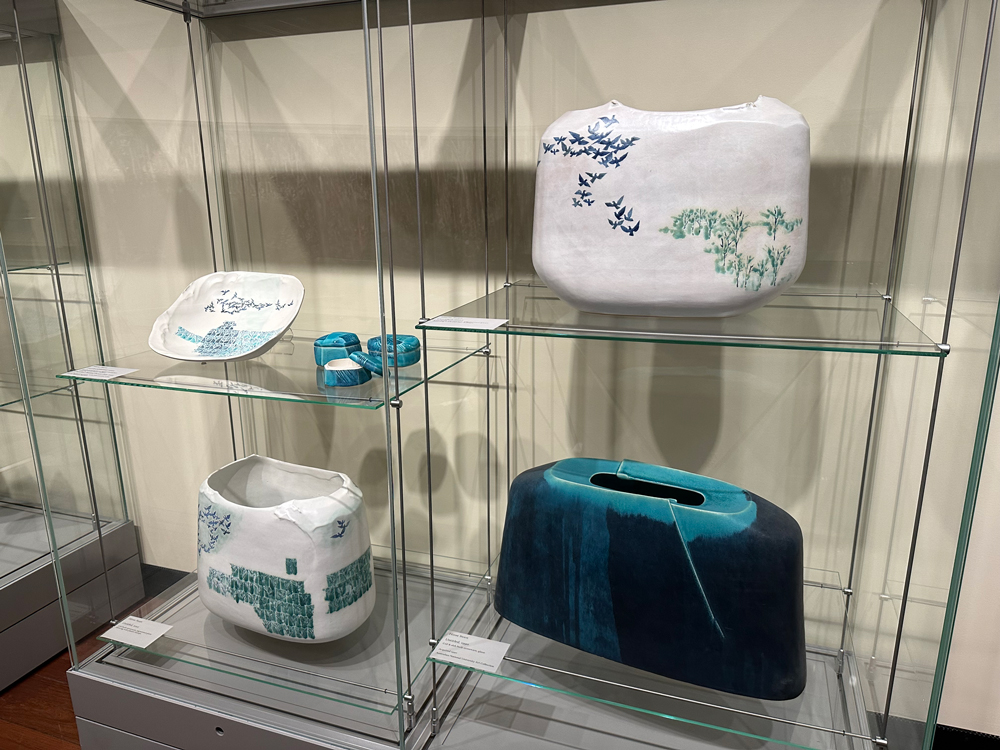
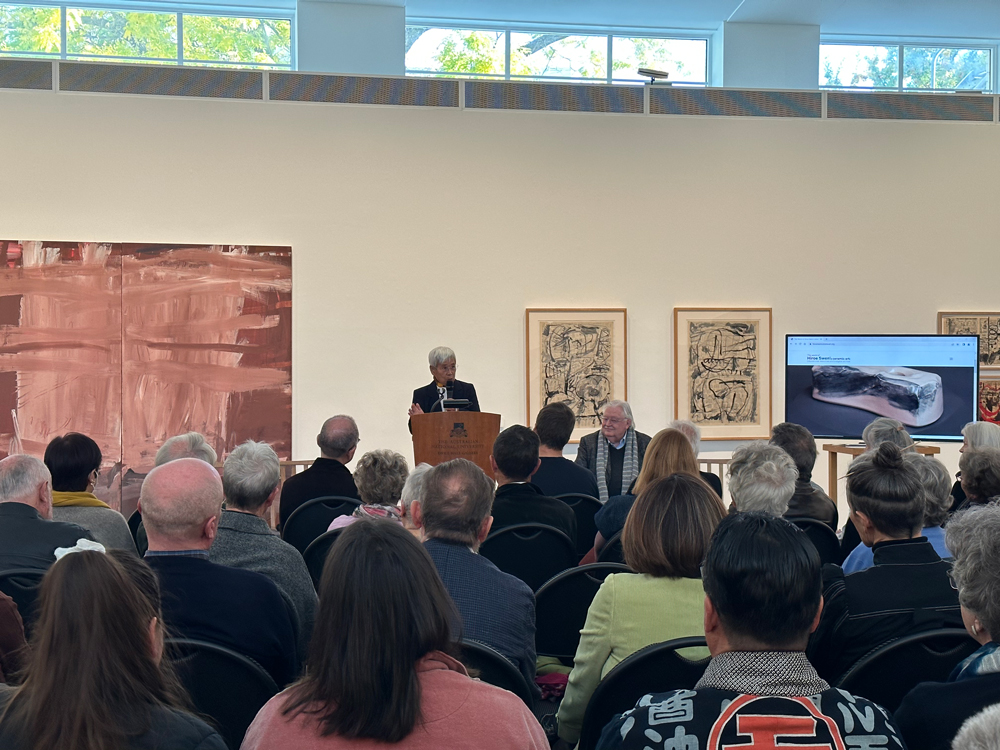
Each of her works are unique and beautiful, and every colour, pattern, and shape is carefully crafted. They express poetic and visual beauty, which reflect her years of hard work, professionalism, and above all, her love and passion for ceramics.
After viewing the works, speeches were made by various members of the digital archive project as well as close friends of Swen. Grace Cochrane, a leading researcher of crafts in Australia, Meghen Jones, an American leading researcher of Japanese ceramic art (participated by video message), Paul Davis, a well-known ceramic artist, and a ceramics educator Jacqueline Clayton, all spoke warmly not only about Swen’s work, but also about her as a person and a friend. It was a great opportunity to learn how much she has influenced and been loved by others.
Finally, Swen gave a speech. I was particularly impressed by the following words:
“To my work, people, and friends, I’ve always opened my heart and been sincere and truthful. I chose to live for art and want to continue until my death. I wish having a great, healthy, and long life.”
I sincerely hope that her wish will come true.
Digital archive ‘The World of Hiroe Swen’s ceramic art’
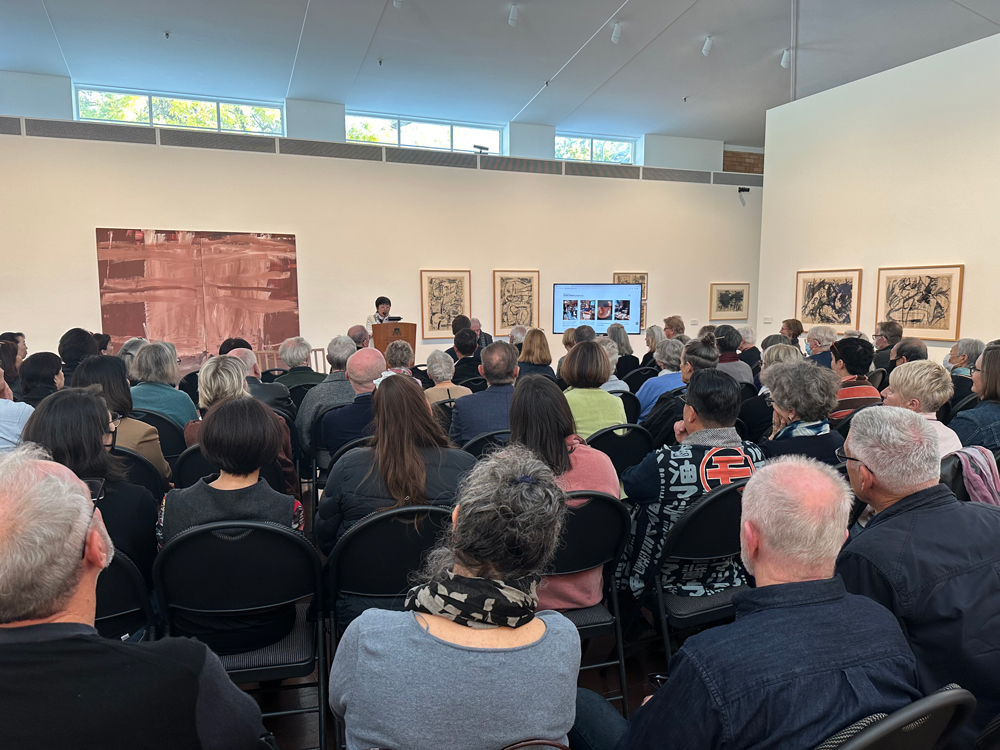
The digital archive that was the centre of the event was a project made possible with the support of the ACT Government’s ArtsACT Fund and the NSW Government’s CreateNSW Fund. The project was born out of a desire to document Swen’s creative practice in the studio through a series of technical demonstrations. Swen says that the digital archive project began with a desire to share her skills, knowledge, and passion for ceramics with future generations of ceramic artists.
The digital archive website consists of five main components: a video archive of Swen’s creative process, a video interview, a photo archive, a catalogue of over 210 works, and essays written by critics.
Her achievements as a ceramic artist are reflected in this digital archive and will inspire future ceramic artists for years to come. The website is available in Japanese and English, so be sure to check it out.
Website: https://www.hiroeswenceramicart.org/












